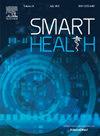Heterogeneous sensing based indoor localization leveraging Bayesian prior estimation
Q2 Health Professions
引用次数: 0
Abstract
Indoor wireless localization is critical for enabling a wide range of mobile and IoT applications, such as elder monitoring, robot navigation, and augmented reality/virtual reality. Current wireless localization techniques rely on homogeneous sensing, utilizing single-modality signals like Bluetooth, WiFi, or mmWave, which are susceptible to in-channel interference, multipath distortions, and environmental variability (e.g., device position and furniture placement changes). In this paper, we design a heterogeneous sensing system that combines wireless signals of multiple modalities to enhance indoor localization accuracy. Through building a Bayesian-based framework, we statistically integrate location fingerprints from various sensing modalities to address the nonlinearities introduced by spatial and temporal fluctuations. Our approach is generalizable and can be applied to existing fingerprinting localization methods based on machine learning algorithms, such as K-nearest neighbors (KNN), support vector machines (SVM), and deep learning models, significantly enhancing the localization performance and robustness. Extensive real-world experiments demonstrate that our system reduces the average localization errors from 2.1 m to 1.23 m, even in the presence of complex environmental dynamics.
基于贝叶斯先验估计的异质感知室内定位
室内无线定位对于实现广泛的移动和物联网应用至关重要,例如老年人监控,机器人导航和增强现实/虚拟现实。当前的无线定位技术依赖于同质感应,利用蓝牙、WiFi或毫米波等单模态信号,这些信号容易受到信道内干扰、多径失真和环境可变性的影响(例如,设备位置和家具放置位置的变化)。为了提高室内定位精度,本文设计了一种结合多模态无线信号的异构传感系统。通过构建基于贝叶斯的框架,我们统计整合了来自不同传感方式的位置指纹,以解决空间和时间波动带来的非线性问题。我们的方法具有通用性,可以应用于现有的基于机器学习算法的指纹定位方法,如k近邻(KNN)、支持向量机(SVM)和深度学习模型,显著提高了定位性能和鲁棒性。大量的实际实验表明,即使在复杂的环境动态存在下,我们的系统也将平均定位误差从2.1 m降低到1.23 m。
本文章由计算机程序翻译,如有差异,请以英文原文为准。
求助全文
约1分钟内获得全文
求助全文

 求助内容:
求助内容: 应助结果提醒方式:
应助结果提醒方式:


